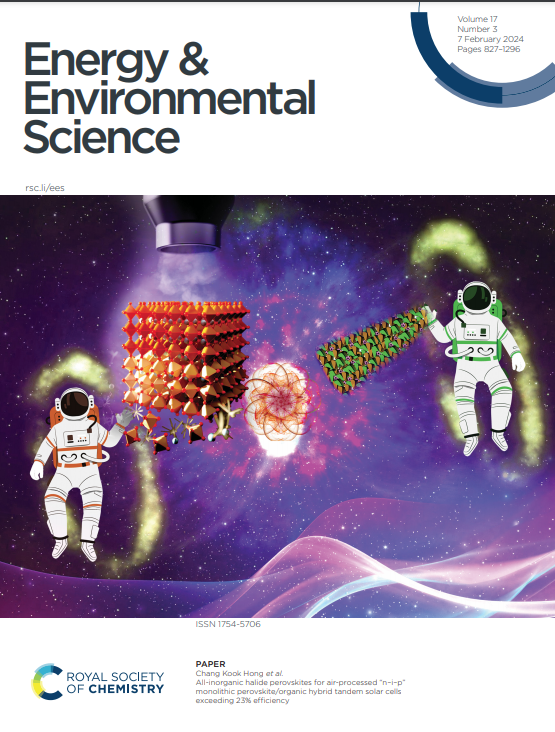利用质子添加剂实现无枝晶锌阳极的高锌(002)优先取向
IF 32.4
1区 材料科学
Q1 CHEMISTRY, MULTIDISCIPLINARY
引用次数: 0
摘要
尽管锌基电池一直被认为是最有前途的大规模储能技术之一,但其发展仍然受到枝晶形成的严重阻碍。由于锌(002)具有最低的表面能和最紧密的堆积形态,因此构建高(002)纹理的锌电极来引导锌沉积已被证明是抑制枝晶的有效方法。本文首次报道了阳离子添加剂(质子)作为一种通用策略,可有效促进 Zn(002) 纹理的形成。在简单的 ZnSO4 + H2SO4 电解液中获得了高 Zn(002)- 偏好取向,有效抑制了枝晶的形成和副反应的产生。Zn(002)||Zn(002) 对称电池可在 5 mAh cm-2 的实际沉积容量和 5 mA cm-2 的电流密度下稳定循环长达 1900 小时。此外,还系统研究了含有质子添加剂的电解液中 Zn(002)纹理的形态演变和形成机制。该阳离子质构策略可为构建金属锌的高(002)优选取向提供新的见解。本文章由计算机程序翻译,如有差异,请以英文原文为准。
High Zn(002)-preferential orientation enabled by proton additive for dendrite-free zinc anode
Although zinc-based batteries have long been considered as one of the most promising technologies for large-scale energy storage, its development was still seriously hindered by dendrite formation. Constructing highly (002)-textured Zn electrode to guide Zn deposition has been demonstrated as an effective approach for dendrite suppression due to the lowest surface energy and closest packing morphology of Zn(002) texture. Herein, cation additive (proton) was for the first time reported as a universal strategy to effectively promote the formation of Zn(002) texture. A high Zn(002)-preferential orientation was obtained in a simple ZnSO4 + H2SO4 electrolyte, which effectively suppressed formation of dendrite and side-reaction production. And Zn(002)||Zn(002) symmetric cell can cycle stably up to unprecedented 1900 hours under a practical deposition capacity of 5 mAh cm-2 with 5 mA cm-2 current density. Morphology evolution and formation mechanism of Zn (002) texture in electrolyte with proton additive was also systematically investigated. The cation texturing strategy may provide novel insights for constructing high (002)-preferential orientation of metallic Zn.
求助全文
通过发布文献求助,成功后即可免费获取论文全文。
去求助
来源期刊

Energy & Environmental Science
化学-工程:化工
CiteScore
50.50
自引率
2.20%
发文量
349
审稿时长
2.2 months
期刊介绍:
Energy & Environmental Science, a peer-reviewed scientific journal, publishes original research and review articles covering interdisciplinary topics in the (bio)chemical and (bio)physical sciences, as well as chemical engineering disciplines. Published monthly by the Royal Society of Chemistry (RSC), a not-for-profit publisher, Energy & Environmental Science is recognized as a leading journal. It boasts an impressive impact factor of 8.500 as of 2009, ranking 8th among 140 journals in the category "Chemistry, Multidisciplinary," second among 71 journals in "Energy & Fuels," second among 128 journals in "Engineering, Chemical," and first among 181 scientific journals in "Environmental Sciences."
Energy & Environmental Science publishes various types of articles, including Research Papers (original scientific work), Review Articles, Perspectives, and Minireviews (feature review-type articles of broad interest), Communications (original scientific work of an urgent nature), Opinions (personal, often speculative viewpoints or hypotheses on current topics), and Analysis Articles (in-depth examination of energy-related issues).
 求助内容:
求助内容: 应助结果提醒方式:
应助结果提醒方式:


